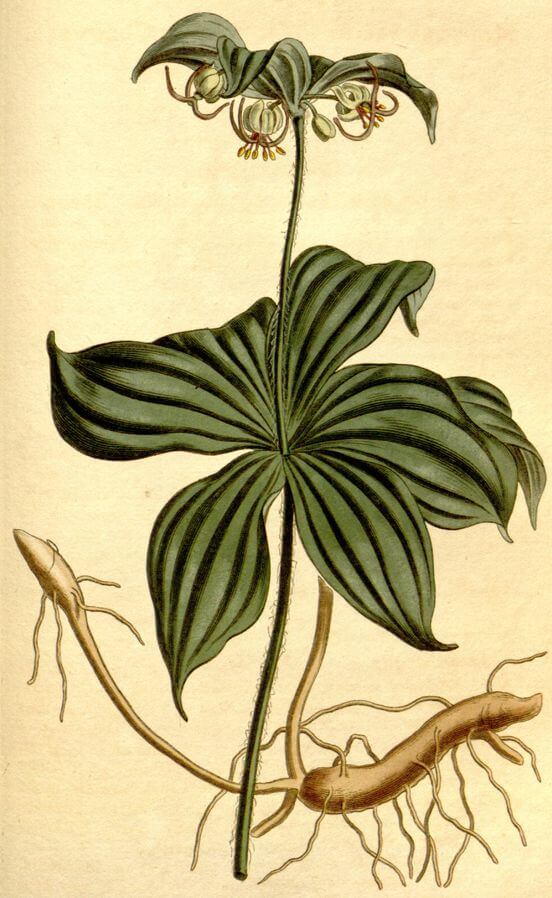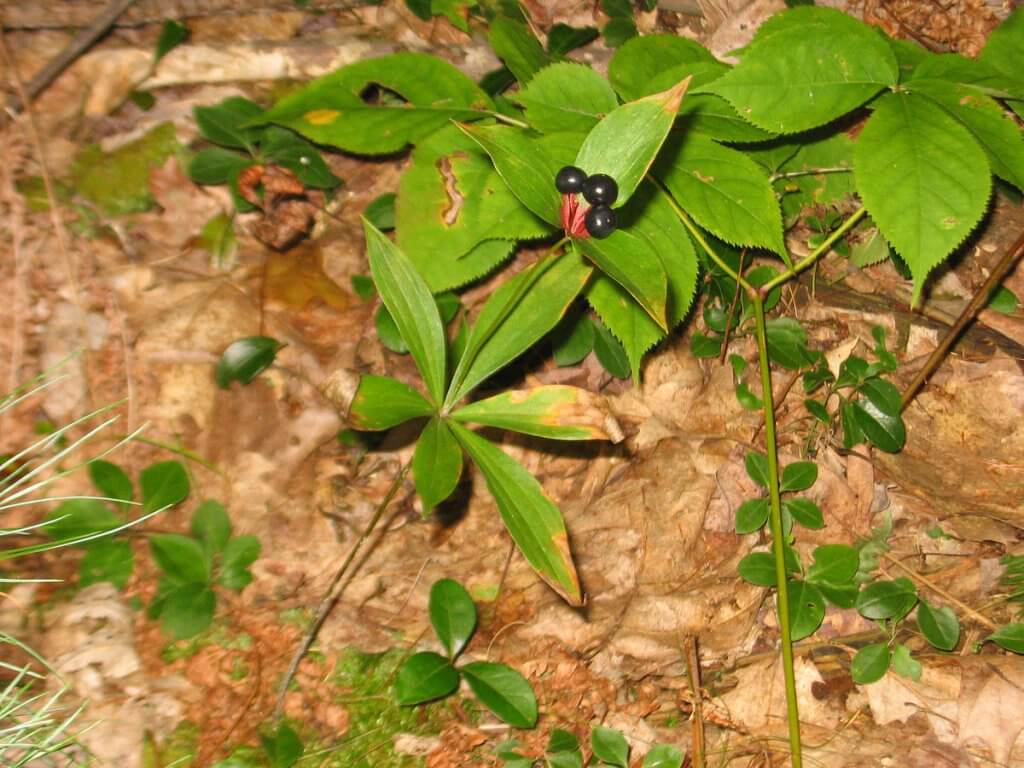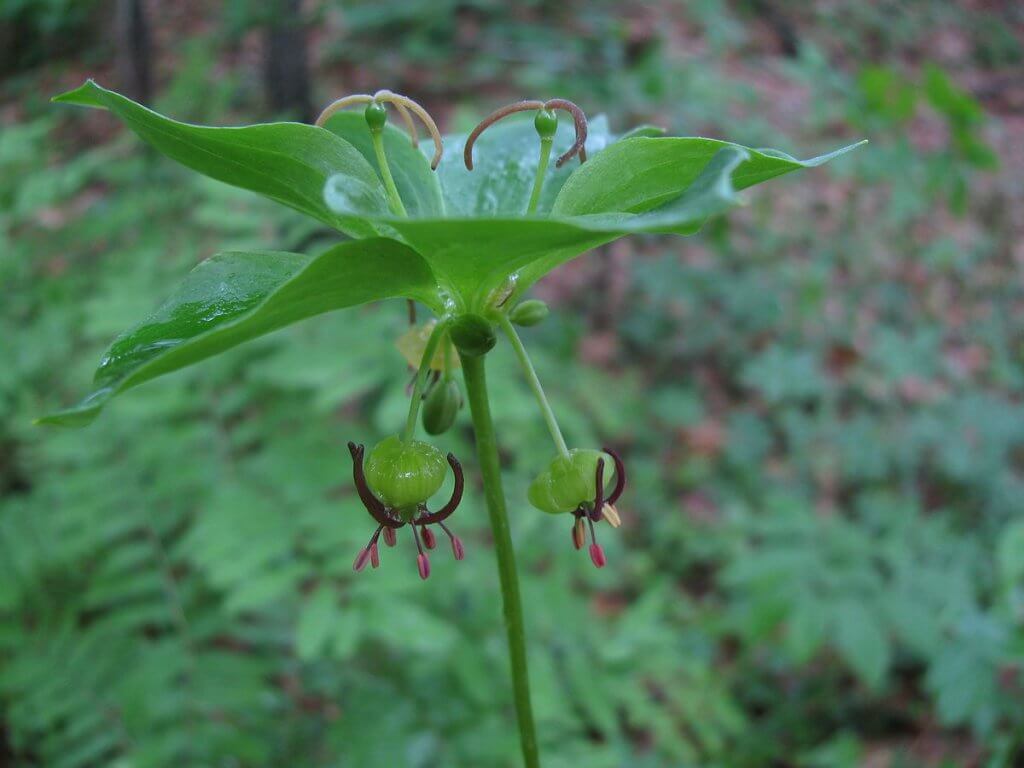
(Photo by: Sydenham Edwards/Wikimedia Commons)
Much like may other plants in the Lily (Liliaceae), Indian cucumber (Medeola virginiana) is a good wild edible. Indian cucumber is a perennial plant that’s native to eastern North America. This plant got its name from the fact that it tastes and smells almost exactly like cucumber. Aside from its culinary uses, this plant also has several medicinal benefits. In fact, some Native American tribes have been using this plant as a part of their traditional folk medicine.
Edibility and culinary use
As the name suggests, Indian cucumber is tasty with a fresh, cucumber-like flavor. Both the roots and leaves can be eaten raw or cooked like other root vegetables. They taste especially great in salads due to their fresh flavor.
This plant can be found growing in woods throughout eastern North America. But, it’s not recommended to forage this plant in the wild. Indian cucumbers are rarely found in the wild and they’re even endangered in some states. If you want to include Indian cucumber roots in your diet, it’s recommended for you to grow some plants in your own garden.
Health benefits
The roots have diuretic and anti-convulsion properties. They’re usually brewed to make an herbal tea to aid convulsions and seizures in children. Sometimes, crushed berries and leaves are made into a herbal infusion. This infusion has similar medicinal benefits as the root herbal tea. Its diuretic property has also been shown to maintain kidney health and treat edema as well as water retention.
Cultivation

(Photo by: Jomegat/Wikimedia Commons)
As mentioned earlier, it’s better to grow Indian cucumber plants in your own garden. This plant isn’t overly common in the wild and overharvesting the roots may cause an imbalance in the ecosystem.
You can gather Indian cucumber seeds from the plant’s ripe berries in August or early September. It’s best to plant the seeds immediately, but they may also be stored in a cool and dry environment to be planted later.
Choose a shaded area for planting; this plant doesn’t like too much sun nor does it like deep shade. Sow the seeds in the fall in a cold frame and they should start to germinate by spring. Give them around 1’ of space apart from each other. Water regularly to ensure optimum growth, but make sure the soil doesn’t get flooded.
Indian cucumber is a very slow grower, so you really need to be patient before starting to harvest the roots. It might take up to two years for the plant to establish itself and another five years until it starts flowering. Also, you need to know that this plant is fussy when it comes to transplantation. So, once you dig it out and harvest the roots, the plant will most likely wilt and die.
Cautions
There are no known side effects of this herb. However, due to the lack of research regarding Indian cucumbers, it’s best to consult your doctor before starting to consume it.

(Photo by: Jomegat/Wikimedia Commons)
Conclusion
Indian cucumber roots can be a great supplement to boost your kidney health and cure some ailments. However, you must not harvest wild Indian cucumber roots as it may kill the plant and eventually, ruin the ecosystem. With this plant, your best bet is to grow it in your own lawn. As a slow-grower, cultivating Indian cucumber may be annoying and tedious for most. But with patience, you’ll be able to harvest the roots from your own garden.
---------------
Writen by Cornelia Tjandra
Cornelia is a freelance writer with a passion for bringing words to life and sharing useful information with the world. Her educational background in natural science and social issues has given her a broad base to approach various topics with ease. Learn more about her writing services on Upwork.com or contact her directly by email at cornelia.tjandra@gmail.com
Many of our readers find that subscribing to Eat The Planet is the best way to make sure they don't miss any of our valuable information about wild edibles.
See our privacy policy for more information about ads on this site







One Response
Very common in Northern PA woodlands and wooded roadsides